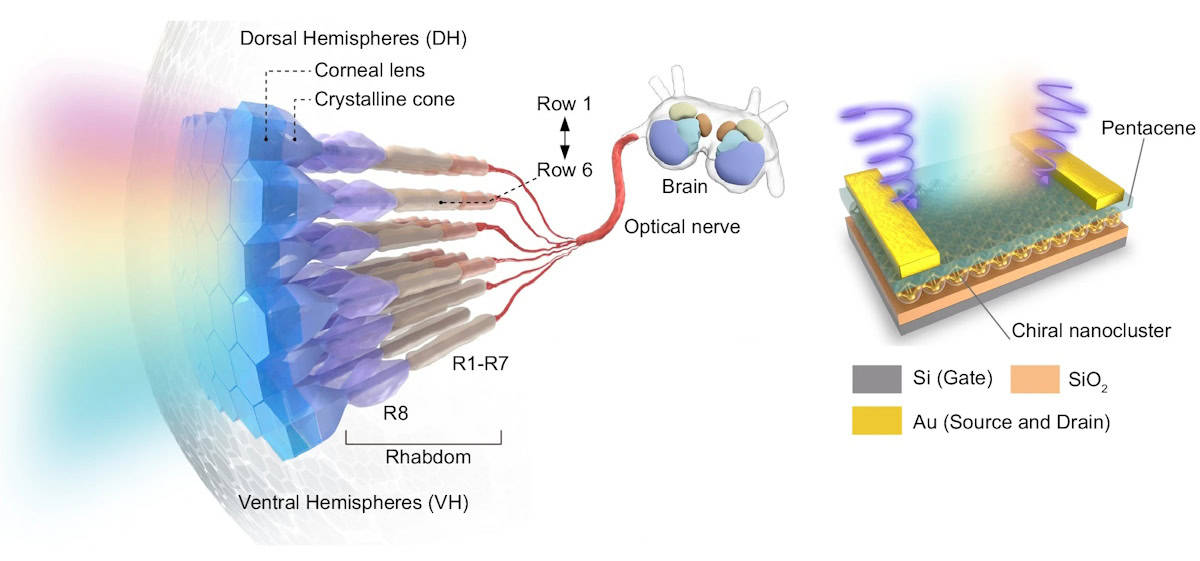
Advances in artificial intelligence and autonomous systems have triggered increasing interest in artificial vision systems (AVSs) in recent years. Artificial vision allows machines to “see”, interpret and react to the world around them, much like humans do when we respond to a situation that we can see changing – a car braking in front of us when driving, for example.
These “machine eyes” capture images from the world around them using cameras and sensors. Complex computing algorithms then process these images, enabling the machines to analyse their surroundings in real time and provide a response to any changes or threats (depending upon their intended application).
AVSs have been used in many areas, including facial recognition, autonomous vehicles and visual prosthetics (artificial eyes). AVSs for autonomous vehicles and high-tech applications have become well established. However, the complex nature of the human body makes visual prosthetics more challenging, because state-of-the-art AVSs do not possess the same level of multifunctionality and self-regulation as the biological counterparts that they mimic.
Many AVSs in use today require several components to function – there aren’t any photoreceptive devices that can perform multiple functions. This means that a lot of the designs are more complex than they should be, making them less commercially feasible and harder to manufacture. Hanlin Wang, Yunqi Liu and colleagues at the Chinese Academy of Sciences are now using nanoclusters to create multifunctional photoreceptors for biological prosthetics, reporting their findings in Nature Communications.
Inspired by the mantis shrimp
The visual system of a mantis shrimp uses 16 photoreceptors to perform multiple tasks simultaneously, including colour recognition, adaptative vision and perception of circularly polarized light. With nature often able to do things that scientists could only dream of achieving on a synthetic level, biomimicry has become a popular approach. And as mantis shrimps have many desirable traits in their natural photoreceptors, researchers have attempted to mimic their properties artificially using nanoclusters.
Nanoclusters are metal atoms that are attached to protective ligands. This is a tailorable approach that gives rise to tuneable physical properties, such as discrete energy levels and sizable bandgaps due to quantum size effects. Nanoclusters also offer excellent photon-to-electron conversion, making them a promising approach for creating artificial photoreceptor devices.
“Nanoclusters are considered to be the next-generation materials for the continuation of Moore’s Law,” Wang tells Physics World. “However, basic scientific issues such as reproducible fabrication of nanocluster-based devices and photoelectric behaviour have remained obscure and unexplored.”
An artificial nanocluster photoreceptor
Inspired by the mantis shrimp, Wang and colleagues created nanocluster photoreceptors and used them as compact, multi-task vision hardware for biological AVSs. “In this research, we present nanocluster-embedded artificial photoreceptors that combine the capability of photoadaptation and circular polarized light vision,” Wang explains.
To create the AVS, the team fabricated a wafer-scale nanocluster photoreceptor array based on a heterostructure of chiral silver nanoclusters and an organic semiconductor (pentacene). The core–shell nature of the nanoclusters allows them to act as an in-sensor charge reservoir to tune the conductance levels of the artificial photoreceptors through a light valve mechanism. This allows the photoreceptor system to determine both the wavelength and intensity of incident photons.
When interfaced with the organic semiconductor material on the array, a ligand-assisted charge transfer process takes place at the nanocluster interface. The protective ligands in the core–shell structure provide a transduction pathway that links the nanoclusters to the organic semiconductor. This femtosecond-scale process facilitates both spectral-dependent visual adaptation and circular polarization recognition.
“We have addressed the wafer-scale fabrication of a uniform interface between a nanocluster film and organic semiconductors, providing a fundamental for high-density integration of artificial photoreceptors with nanoscale footprints,” says Wang.
The interface between the nanocluster and the organic semiconductor provides the adaptive vision, enabling multiple functions to be achieved with tuneable kinetics. Additionally, circular polarization information can be obtained due to the nanoclusters being chiral. As such, the team has developed nanoclusters that combine colour vision, photoadaptation and circular polarization vision into a single photodetector system.

Mantis shrimp inspires hyperspectral and polarimetric light sensor
This ability to combine multiple vision functions into a single system for biological recognition applications is a difficult feat to achieve, with previous approaches having had to rely on multiple components to do the same job as this single opto-electronic system. The team’s approach could help to build simpler and more robust vision hardware for neuromorphic devices and biological vision-related AI hardware.
“Artificial nanocluster photoreceptors perform all-in-one multiple visual functions into a single unit cell,” says Hanlin. “Among them, photoadaptation can be triggered and performed within 0.45 s, with its accuracy reaching 99.75%. This is the highest performance compared to the existing literature and outperforms human visual systems – which is about 1 min”.
Next, the researchers aim to increase photoadaptation switching rates beyond 0.45 s at the nanocluster/organic semiconductor interface. “In the future, we will investigate the characteristics of charge transfer dynamics and produce faster nanocluster-embedded neuromorphic systems,” Wang concludes.
- SEO Powered Content & PR Distribution. Get Amplified Today.
- PlatoData.Network Vertical Generative Ai. Empower Yourself. Access Here.
- PlatoAiStream. Web3 Intelligence. Knowledge Amplified. Access Here.
- PlatoESG. Carbon, CleanTech, Energy, Environment, Solar, Waste Management. Access Here.
- PlatoHealth. Biotech and Clinical Trials Intelligence. Access Here.
- Source: https://physicsworld.com/a/shrimp-inspired-nanoclusters-enable-multifunctional-artificial-vision-systems/



